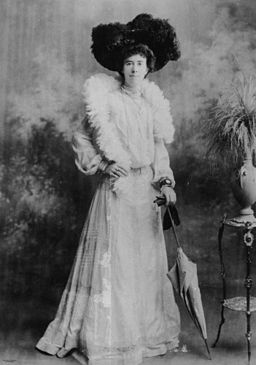|
9/2/2020 Wearing Our Feathered Friends While reading Edith Wharton’s Age of Innocence, set in the 1870s in New York City, I remember being taken aback by a reference to a woman carrying a fan made of Eagle feathers to the opera. Oh dear, I thought. Our national bird? A protected species? Why, just recently they stopped construction of a dock near my hometown because a pair of Eagles were nesting in the trees nearby. Then during the course of my research for my second novel in the Durant family trilogy, I came across a reference to William West Durant taking off with an Adirondack guide to shoot three Loons that had the bad luck to be stuck in a cove as it had iced-over one night in early spring (1890). Loons are heavy and can’t take off without a flyway and so, as the memoir I found at the Adirondack Museum goes, the Loons managed to keep a small opening in the ice during the night but needed the cove to melt so that they had enough space to take off. Unfortunately, they never got that chance (you’ll have to read story two to find out what happens to them). I was aghast. My modern sensibilities get in the way of my research at times. While describing ladies’ fashions during the Victorian era I had to contend with the fact that women loved wearing the artifacts of dead birds on their hats or to adorn their outfits. After all, it wasn’t until Boston socialite Harriet Hemenway and her cousin Minna started a a boycott against the practice of hunting exotic birds down to adorn lady’s hats in 1896 that the abomination of the practice came to light. Indeed, these two lady mavericks are credited with starting the Audubon Society to save birds from extinction. They first heard about the plight of birds after an amateur ornithologist, Frank Chapman, wrote about his experience watching bird hunters go after an egret rookery, plucking the feathers and leaving the young to die in the trees. Chapman is also credited with surveying for birds on the streets of New York City. In one day in 1886 Chapman counted 542 hats adorned with 174 whole birds or their parts. He claimed to have counted over forty different species of birds on ladies’ hats: pheasants, peacocks, egrets, scarlet tanagers, robins, and blue jays, just to name a few. It wasn’t until the turn of the century that it started to become unfashionable to be wearing a dead bird on one’s head, much less a bird that was considered endangered. This points to the fact that at the time, people believed our resources to be limitless, or never knew the difference and didn’t care. Comments are closed.
|
AuthorSheila Myers is an award winning author and Professor at a small college in Upstate NY. She enjoys writing, swimming in lakes, and walking in nature. Not always in that order. Archives
April 2024
CategoriesAll Adirondacks Algonquin Appalachia Award Cades Cove Canada Chestnut Trees Christmas Civilian Conservation Corps Collis P. Huntington Creativity Doc Durant Durant Family Saga Emma Bell Miles Finger Lakes Great Depression Hell On Wheels Historical Fiction History Horace Kephart Imagination National Parks Nature Publishing Review Screenplay Short Story Smoky Mountains Snow Storm Stone Canoe Literary Magazine Thomas Durant Timber Wilderness World War II Writing |
|
|
All materials Copyright 2022
Any reproduction, reprint or publication without written consent of author prohibited. |
 RSS Feed
RSS Feed